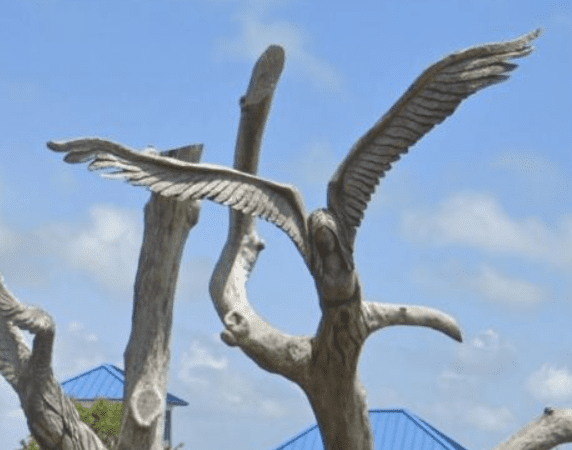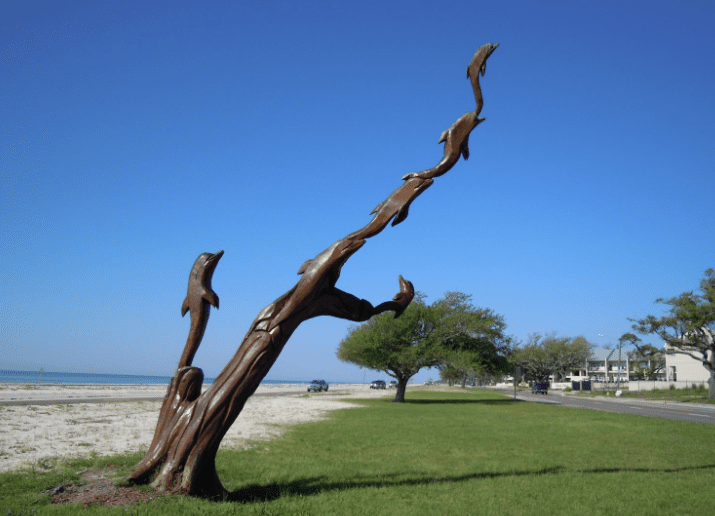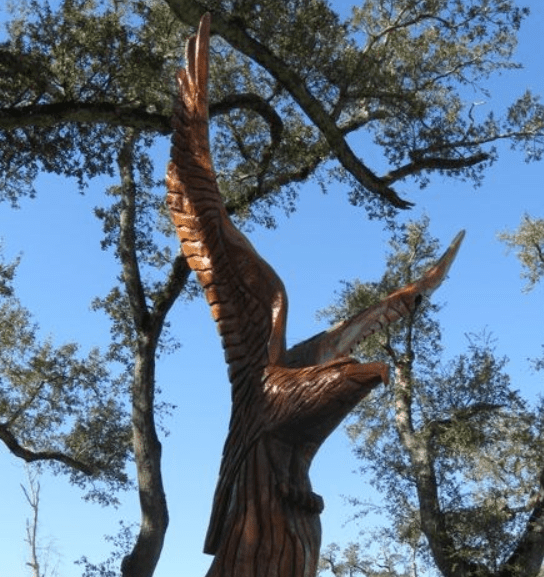By: Susan Marquez, Magnolia Tribune
Photos from gulfcoast.org / coastalmississippi.com

All along scenic Highway 90 on the Mississippi Coast, from Bay St. Louis to Biloxi, motorists will spot a series of unusual trees.
Oftentimes, beauty comes from the tragedy of destruction, and that holds true on the Mississippi Gulf Coast – the destruction of Hurricane Katrina, which made landfall on August 29, 2005.
As we approach the 20th anniversary of that killer storm, instead of focusing on the devastation it caused, the focus here will be on the resilience of the people on the Gulf Coast – the people who saw beauty in the remains and worked to remember the event in a way that honors those who lost their lives, homes, livelihoods, and those who persevered and rebuilt.
All along scenic Highway 90, from Bay St. Louis to Biloxi, motorists will spot a series of unusual trees. There stands swathes of old-growth oaks and cypresses that were either destroyed or severely damaged. But instead of cutting down the remains, three prestigious wood sculptors worked to transform them into works of art.
The “Angel Tree” in Bay St. Louis especially stands out. The tree served as a refuge for three people and their dog in the storm. The gnarled and damaged tree was painted with beautiful wings, making it appear to soar among several other transformed trees as a symbol of recovery and resilience.

The sculpture project began in January 2007. Biloxi’s mayor at that time, A.J. Holloway, and the city’s public affairs manager, Vincent Creel, contacted Dayton Scoggins, a member of the Mississippi Craftsmen’s Guild, who creates sculptures using a chainsaw.
Mississippi Department of Transportation crews worked to “top” the dozens of standing dead trees that stood in the median of Beach Boulevard in Biloxi, victims of the saltwater storm surge of Hurricane Katrina.
With a $7,000 investment by the City of Biloxi, Scoggins made the first of two visits to Biloxi to create sculptures of native wildlife, including egrets, seagulls, dolphins, and pelicans.

Inspired by Scoggins’ work, Marlin Miller, a Fort Walton Beach sculptor who was a frequent visitor to Biloxi, approached the city about donating his time and talent to sculpt more of the standing dead trees in Biloxi’s Beach Boulevard medians. Miller wanted to leave his mark as a way to thank the citizens of Biloxi who helped his community recover from Hurricane Ivan a couple of years earlier. He sculpted 16 works of art to help beautify the Gulf Coast.
Another chainsaw artist, Dayle Lewis of Indiana, heard about the public art and traveled to the Gulf Coast to make his mark on the dead trees.
Now, the trees have become one of the most photographed attractions on the Mississippi Gulf Coast. A survey of visitors by the Gulf Coast Convention and Visitors Bureau reported that the sculptures are one of the top attractions on the Mississippi Coast.

There are about fifty sculptures in total, with perhaps the most notable being the world’s largest eagle sculpture. Standing 25 feet tall, the sculpture is located in the War Memorial Park on Highway 90 in Pass Christian. It was carved by Marlin Miller from a Katrina-damaged southern live oak.
The tree was dedicated in 2009 to the father of Pass Christian native Robin Roberts of ABC’s Good Morning America. Colonel Lawrence Roberts was a member of the famed Tuskegee Airmen.
